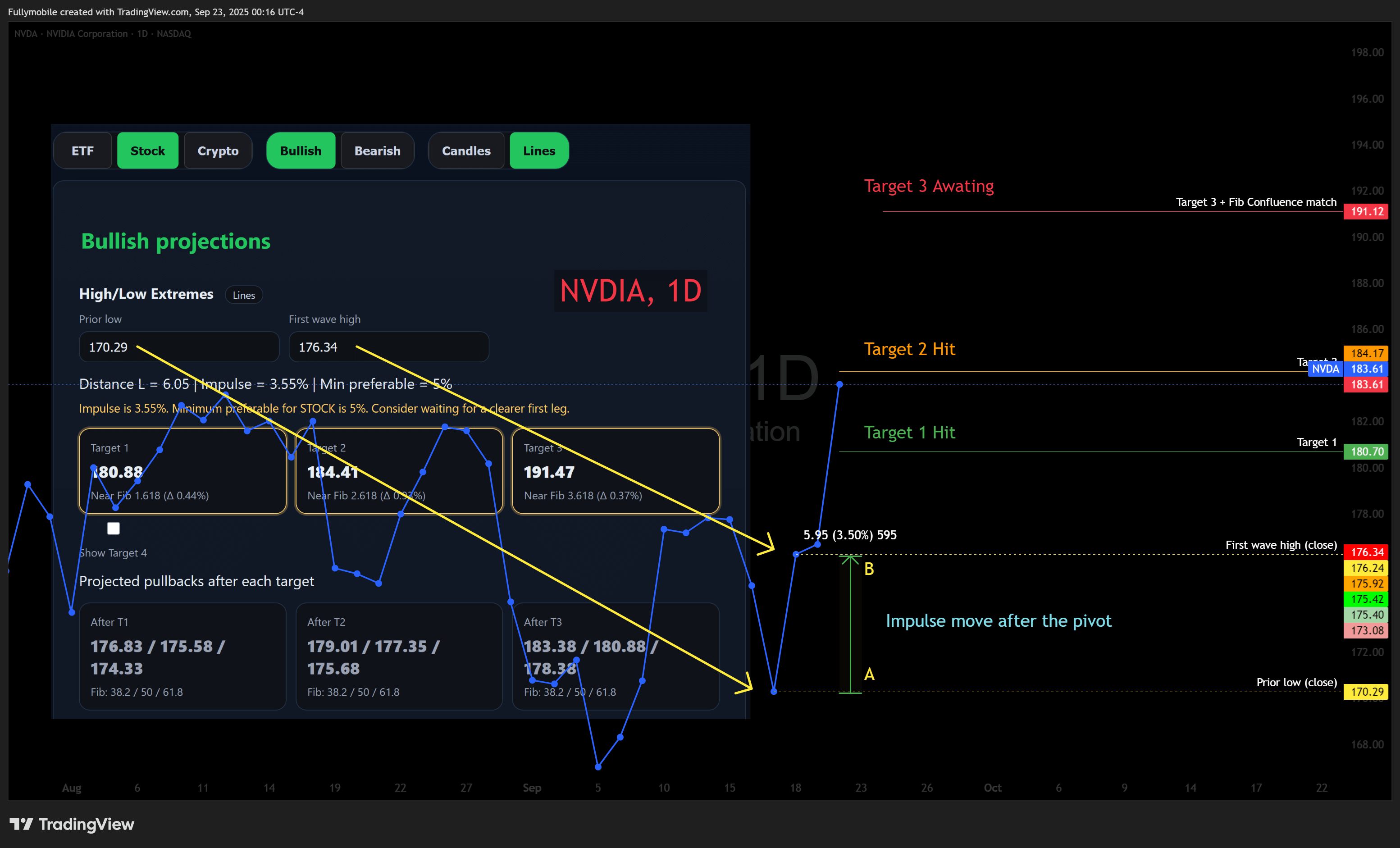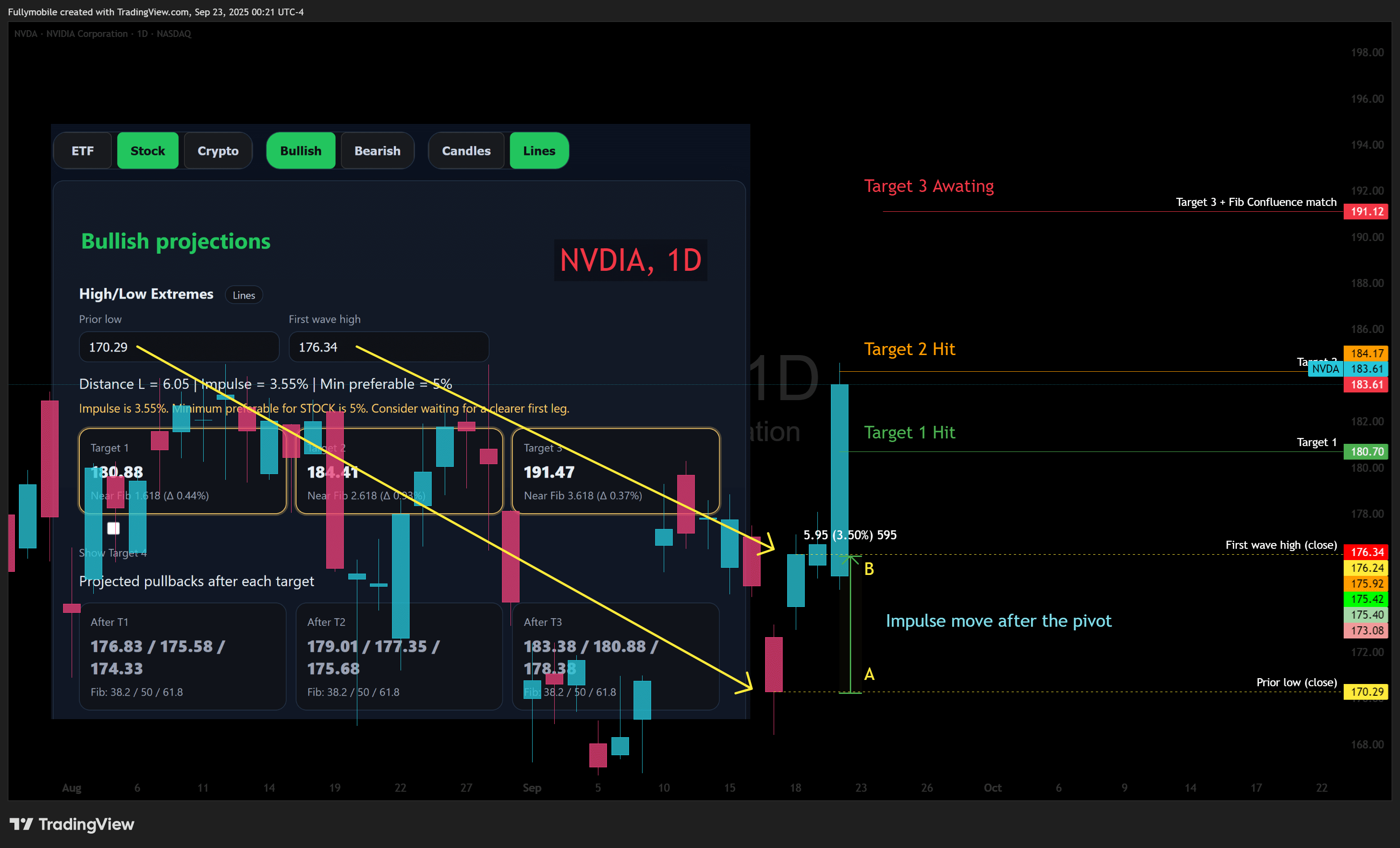
Rule of 7 Calculator
Map the first impulse, project Rule of 7 targets, and auto-check Fibonacci confluence.

Map the first impulse, project Rule of 7 targets, and auto-check Fibonacci confluence.
Arthur Sklarew’s Rule of 7 projects expansion targets from the first impulsive leg after a breakout. All credit for the method goes to him—this tool just makes it visual and beginner-friendly so you can apply it consistently.
Bullish: L = High − Low. Targets = Low + L × 7/4, 7/3, 7/2, 7/1 (1.75, 2.33, 3.50, 7.00).
Bearish: L = High − Low. Targets = High − L × 7/4, 7/3, 7/2, 7/1.
After a target is tagged, price often corrects part of the most recent advance. The tool shows a pullback band for each target using retracements of the leg into that target: 38.2%, 50%, and 61.8%.
How close a target must be to a Fib to count as near. Start with ETF 0.5%, Stocks 1.0%, Crypto 2.0. Tighten if too many highlights; widen if none.
A healthy first leg is often around ≥1–1.5× a typical daily ATR on your timeframe. If your impulse is much smaller, consider waiting for a clearer thrust.


Click any image to open a large view.
The Rule of 7 projects expansion targets from the first impulsive leg after a breakout. Measure the thrust length L from the breakout point to the first strong drive. Then add multiples of L to the breakout point for uptrends, or subtract for downtrends.
Classic multipliers: 1.75, 2.33, 3.50, 7.00.
Example: breakout confirms at 100, the first strong drive peaks at 112, so L = 12.
T1 = 100 + 1.75 × 12 = 121.0 • T2 ≈ 128.0 • T3 = 142.0 • T4 = 184.0
A confluence zone is where an R7 target sits near other independent levels. Prioritize:
No. R7 provides objective targets, not guarantees. Targets are reached when trend quality remains intact and liquidity is healthy.
If you choose Lines, use closing prices for both anchors. If you choose Candles, measure wick-to-wick. Be consistent—mixing the two will skew L and the targets.
Start with ETF 0.5%, Stocks 1.0%, Crypto 2.0. Tighten if too many targets highlight; widen if none do.
Different tools, same job: R7 projects fixed multiples of the first impulse (1.75, 2.33, 3.50, 7.00). Fibonacci extensions project proportional growth of that same impulse (1.272, 1.414, 1.618, 2.000, 2.618, 3.618). Because the math is independent, overlap = confluence and often marks where reactions cluster.
A yellow outline on a target means at least one enabled Fib sits within your tolerance. Treat it as a higher-interest zone, not a guarantee—plan for both respect and break.
T4 (7×L) is an extreme stretch. It’s useful for trend-mature runs and for scenario planning. Toggle it off if you’re focusing on conservative scaling (T1–T3).
Adds two less-common—but popular—extensions between 2.0 and 2.618. They can sometimes align better with fast moves.
Yes. Use the same anchors on your intraday timeframe. For quality, prefer impulses that are ≥1× your typical intraday ATR for that symbol.